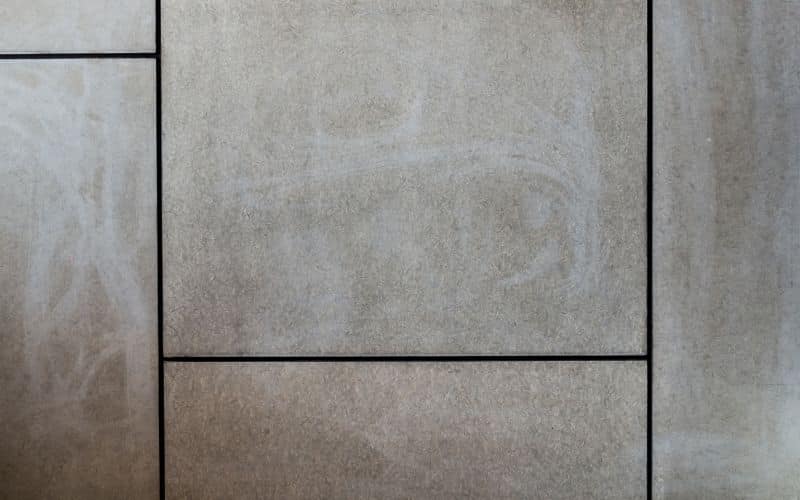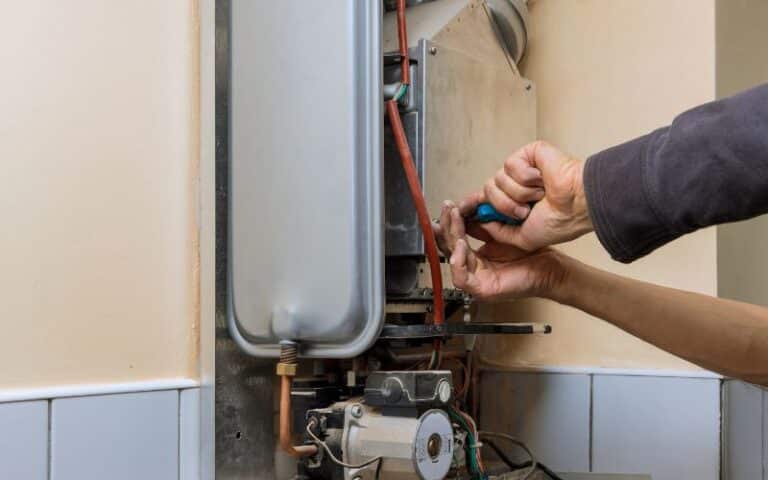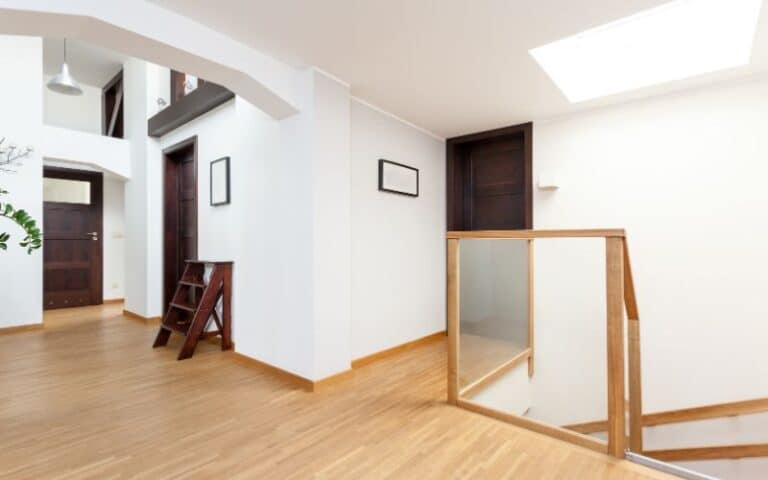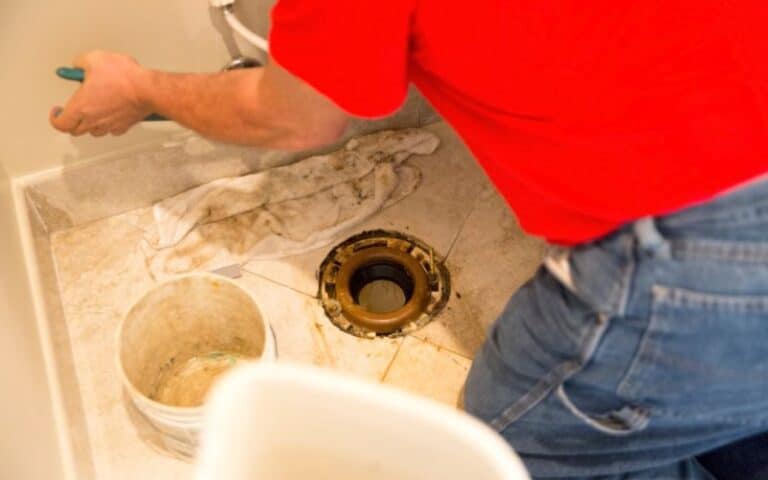Cement boards are one of the most popular solutions for interior cladding.
These boards have several wonderful advantages, including ease of use, inexpensive, and sturdy nature.
Cement boards have a drawback that some people don’t like: they have an unfinished appearance with obvious glue stains and sizable apparent cracks.
You can use mastic on cement boards to install tiles and improve their appearance. What is mastic, and why is it suitable for cement boards?
Mastic on cement boards is an adhesive sealer used alongside a thinset mortar to adhere tiles to wall or floor surfaces before caulking them together. Mastic can adapt to many settings and has a very strong adhesive quality, but you shouldn’t use it too on cement boards that are wet with water.
This post is a must-read since it will satisfy your curiosity and explain how mastic on cement boards functions in detail.
Ready for a Flooring Quiz?
Can You Use Mastic on a Cement Board?

Mastic would work nicely on both sides of a cement board, so yes, you can do that! The only exception is moist cement boards.
It means you shouldn’t seal cement boards in bathrooms and other wet locations with mastic.
It is so that the mastic won’t emulsify in the presence of water and become a food source for molds growing in the area.
It is also not a good idea to use it in your bathroom since moisture can readily seep beneath porous tiles and through caulking in a bathroom.
You can install many different backsplash tiles securely and effectively using mastic.
For instance, you can use mastic if installing a new backsplash in your kitchen because it is simple to use and will save you time before, during, and after the job.
Mastic might not be suitable in certain backsplash installation situations. Clear glass tiles are one example.
Some glass tiles have a white coating that will stop the color of the glue from showing through the tiles.
It is crucial because, after some time has gone, mastic has the potential to turn yellow.
Without an opaque background, you run the danger of this eventually displaying through the tile if you use this to place clear glass tiles.
While this is not a given or even something to be aware of, it is an aspect to watch out for, particularly if you are a person who pays attention to details.
Mastic works best for tiles 8 inches or smaller, and you should not use it for tiles larger than 15 inches.
The extended surface area prevents air from entering beneath the tile. The mastic beneath the tiles won’t completely dry as a result.
The mastic must lose its water content by evaporation to dry and harden.
Is Mastic on Cement Board Durable?
Mastic sealants on cement boards are strong and long-lasting, producing a strong bond between cement boards and tiles.
It is perfect for sealing gaps where they need strength to withstand movement and requires a seal that can stand the test of time.
A high-quality mastic sealant will maintain its flexibility and be able to adapt to little temperature and movement changes.
Mastic sealants are durable, but they don’t last as long as thin-set mortar, which is dry and can last the entire life of a building.
When used improperly, organic mastic sealants can weaken their durability by promoting mold growth.
Superior holding power, ease of application, and quick setting characterize mastic.
When used to tile walls, its strength enables you to put tiles, and if you have good eye-hand coordination, you can lay tiles without using spacers.
Mastic offers strong bonds between components and grommet joints to keep fluids and other elements from mixing.
Compared to many other sealants, they offer better flexibility and are abrasion resistant.
Is It Easy To Remove Mastic From Cement Board?
You can easily remove mastic from cement boards while still wet. However, removing it from cement boards becomes challenging when mastic dries up.
It gets more challenging to remove when it dries up, but it is still doable. You shouldn’t use ordinary cleaning products to remove dried mastic from cement boards.
To help with mastic removal, you should choose commercial cleaning products instead.
You can easily remove mastic by using temperature and chemical agents since they are more efficient against it. Sometimes you have to work hard to get the mastic out.
To remove the mastic, you should always keep a scraping tool in hand.
Here are a few techniques for removing mastic from cement boards.
#1. Applying Hot Water
The high hot water temperature might help remove mastic from your concrete board. It can be highly effective, particularly if the mastic is aging and beginning to break.
When removing the mastic with hot water, divide the task into smaller portions to avoid burning yourself.
You might lay a towel over the area you are removing the mastic from and pour the water upon it to prevent burns.
It absorbs the water and holds onto the heat required to remove the mastic.
After the mastic is thoroughly submerged in water, remove the towel and begin scraping the mastic from the surface.
#2. Using a Hot Pressing Iron
You can remove mastic from your cement boards using a hot-pressing iron.
The mastic will stick to the panel because of the heat that the pressing iron’s panel emits, making it easier to remove with a scraper.
You can then scrape off the mastic by pulling the iron away.
#3. Applying Ammonia
You can also remove the mastic from your cement boards by using ammonia.
First, fill a bucket with warm water and add a few drops of dish detergent. Spray or scrub the mastic with a mixture of two cups of ammonia.
The solution should make the mastic on the cement board easier to brush off by softening the adhesive.
Also Read: Installing Hardie Siding Without Corner Boards!
Mastic Vs. Thinset For Cement Board; Which Is Better?
Since cement boards have visible grout, mastic is preferable to thin sets for use on them. For applications where grouts will be visible, thin sets are not the best choice.
However, choosing between mastic and thin-set is challenging as the superior adhesive.
These adhesives are widely utilized in construction and can bring value to any project you use them in.
However, because of their different features, they are best suited for different projects. There are numerous uses for mastic both inside and outside of buildings.
You can use it to glue tiles to various surfaces, including walls, floors, and counters, but it doesn’t work well with damp surfaces.
Additionally, because mastic can contain mold and encourage growth, you should not use it in busy areas.
Thin-set is renowned for its adaptability and strong shear strength—the amount of force needed to separate mortar from the substrate.
Since it guarantees that your tile or stone won’t come loose over time, high shear strength is essential. Thin sets are suitable for usage both inside and outside.
Since thin-set is so versatile, you might also use it in moist locations like showers and bathtubs, but you shouldn’t use it on metals, plastic, or glass.
Also Read: Green Board On Ceiling: All You Need To Know
The table below shows the major differences between mastic and thin-set adhesives.
| Thinset | Mastic |
|---|---|
| Thin sets are suitable for extremely wet conditions. | Mastic is only for use in moist or dry places. |
| Thinset is a low-cost filler that fills gaps and depressions. | Mastic is incredibly slick, catches easily, and sets up quickly. |
| Thin sets are versatile for use. | Mastic has limited use. |
Final Thoughts
In summary, you can use mastic on cement boards. Although it has other uses, people mostly use it on walls and floor tiles.
Due to its restrictions, you should not use mastic on wet cement boards.
Mastic will, however, securely stick to a dry cement board when used as an adhesive sealant. It performs best on non-porous surfaces like glass, metal, and plastic.






